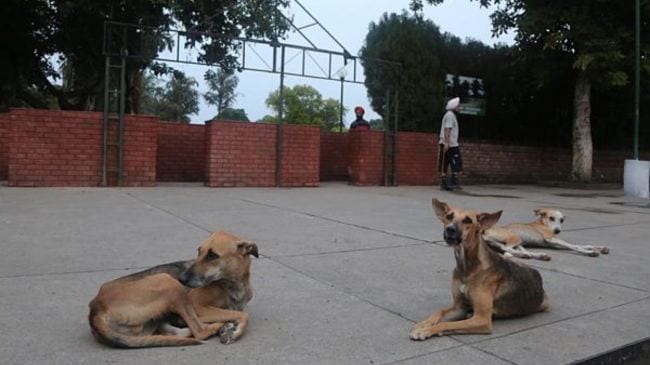Opinion SC stray dogs order: If the bark goes silent, the street changes
The current conversation swings between two extremes: Fear of attacks and the incapacity of shelters. Both are real concerns
 Just days ago, in Himachal Pradesh, a dog’s persistent barking reportedly saved an entire village from a landslide in the dead of night. In another case, a family escaped a house fire because their dog refused to stop barking until they woke. These are not rare miracles.
Just days ago, in Himachal Pradesh, a dog’s persistent barking reportedly saved an entire village from a landslide in the dead of night. In another case, a family escaped a house fire because their dog refused to stop barking until they woke. These are not rare miracles. A plant on my balcony has been blooming since last year — flowers, but no fruit. A friend suggested I try pollinating it by hand, even pointing me to YouTube tutorials. I grew up in houses with gardens where plants bore fruit naturally. I wondered, what had changed? Where were the bees and butterflies that once flitted through my childhood afternoons?
That’s the thing about coexistence. It often disappears quietly, until one day, its absence disrupts something we thought would always be there. Which is why the recent Supreme Court judgment — a larger bench has reserved it for the time being — on stray dogs stayed with me.
Most of us have read the headlines: Delhi authorities can now capture stray or community dogs and move them to shelter homes. The decision follows rising reports of dog bites, rabies — a disease India continues to bear one of the world’s heaviest burdens of — and resident complaints. On paper, it reads like a step toward safer streets. But it also raises a harder question: What are we willing to erase in order to feel safe?
Advocates for removal call it a matter of safety. But safety has layers. Stray dogs, for all the challenges they bring, also deter theft, alert us to danger, and provide companionship to those otherwise invisible in society. Their absence can leave a void that is not just emotional, but practical — to remove them en masse is to forget the centuries of cohabitation that shaped our towns and villages. It is like discarding a worn photograph because of a crease — not realising we are erasing a part of our shared history.
Just weeks ago, in Himachal Pradesh, a dog’s persistent barking reportedly saved an entire village from a landslide in the dead of night. In another case, a family escaped a house fire because their dog refused to stop barking until they woke. These are not rare miracles — they are reminders of the quiet guardianship dogs have offered since the earliest days of human settlements.
Yet guardianship does not mean the absence of risk, and this is where the debate sharpens. I am not saying dogs have never bitten people. They have — sometimes with tragic consequences. India still records an estimated 18,000–20,000 rabies deaths every year, many traced to dog bites — a grim reminder that public health cannot be an afterthought. But using these incidents to justify the wholesale removal of street dogs is like condemning an entire orchard for one bad apple. It ignores the complex ecosystem — social and ecological — that dogs are part of. Remove them, and you may see more than just emptier streets: Higher rates of petty crimes, more unreported dangers, and the loss of a living memory that once gave neighbourhoods their character.
Policy should focus on responsible management — sterilisation, vaccination, public awareness — not erasure. Because when we choose removal over coexistence, we are dismantling a piece of the invisible scaffolding that holds our communities together. Street dogs are not intruders. They evolved alongside our cities for centuries, clearing waste, keeping rodents in check, and becoming part of the urban ecosystem. Their absence disrupts the balance they maintain, as delicate as the one bees keep for crops.
The current conversation swings between two extremes: Fear of attacks and the incapacity of shelters. Both are real concerns. But if shelters are overcrowded and mismanaged, adding thousands more dogs is not a solution. If attacks are on the rise, sterilisation and vaccination — not mass removal — must be our first response.
This issue also points to a larger urban challenge — how we manage shared spaces and resources. Effective waste management, better urban planning, and citizen engagement are crucial to addressing the root causes that bring dogs and humans into conflict. A society that erases every inconvenience shrinks its moral imagination. The humane path is rarely the swiftest or cheapest. It demands a culture that sees community animals not as pests, but as co-inhabitants, and a commitment to coexistence that goes beyond knee-jerk removal.
When coexistence is replaced by removal, something fundamental changes. If the bark goes silent, the street changes. And so do we. Mahatma Gandhi said, “The greatness of a nation and its moral progress can be judged by the way its animals are treated.” This judgment is not just about dogs. It is about the kind of city we want to live in — one that is neat but hollow, or one that is safe because it learns to coexist. And coexistence, like ethics itself, is never a one-time judgment. It is a choice we make every single day.
The writer is a Delhi-based researcher and writer





